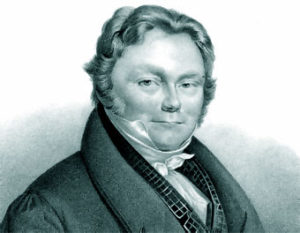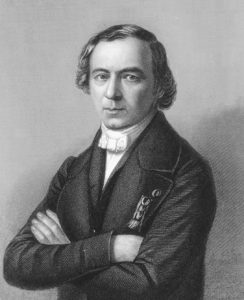Originally published in Modern Development of the Chemical and Biological Sciences Vol. 4 in 1904.
Therefore a veritable sensation was created in the chemical world when, in the year 1828, it was announced that the young German chemist, Friedrich Wöhler, formerly pupil of Berzelius, and already known as a coming master, had actually synthesized the well known organic product urea in his laboratory at Sacrow. The “exception which proves the rule” is something never heard of in the domain of logical science. Natural law knows no exceptions. So the synthesis of a single organic compound sufficed at a blow to break down the chemical barrier which the imagination of the fathers of the science had erected between animate and inanimate nature. Thenceforth the philosophical chemist would regard the plant and animal organisms as chemical laboratories in which conditions are peculiarly favorable for building up complex compounds of a few familiar elements, under the operation of universal chemical laws. The chimera “vital force” could no longer gain recognition in the domain of chemistry.
Now a wave of interest in organic chemistry swept over the chemical world, and soon the study of carbon compounds became as much the fashion as electrochemistry had been in the preceding generation.
But even in the day of its seeming triumph the dualistic theory was destined to receive a rude shock. This came about through the investigations of Dumas, who proved that in a certain organic substance an atom of hydrogen may be removed and an atom of chlorine substituted in its place without destroying the integrity of the original compound–much as a child might substitute one block for another in its play-house. Such a substitution would be quite consistent with the dualistic theory, were it not for the very essential fact that hydrogen is a powerfully electro-positive element, while chlorine is as strongly electro-negative. Hence the compound radical which united successively with these two elements must itself be at one time electropositive, at another electro-negative — a seeming inconsistency which threw the entire Berzelian theory into disfavor.
In its place there was elaborated, chiefly through the efforts of Laurent and Gerhardt, a conception of the molecule as a unitary structure, built up through the aggregation of various atoms, in accordance with “elective affinities” whose nature is not yet understood. A doctrine of “nuclei” and a doctrine of “types” of molecular structure were much exploited, and, like the doctrine of compound radicals, became useful as aids to memory and guides for the analyst, indicating some of the plans of molecular construction, though by no means penetrating the mysteries of chemical affinity. They are classifications rather than explanations of chemical unions. But at least they served an important purpose in giving definiteness to the idea of a molecular structure built of atoms as the basis of all substances. Now at last the word molecule came to have a distinct meaning, as distinct from “atom,” in the minds of the generality of chemists, as it had had for Avogadro a third of a century before. Avogadro’s hypothesis that there are equal numbers of these molecules in equal volumes of gases, under fixed conditions, was revived by Gerhardt, and a little later, under the championship of Cannizzaro, was exalted to the plane of a fixed law. Thenceforth the conception of the molecule was to be as dominant a thought in chemistry as the idea of the atom had become in a previous epoch.
 Pasteur Brewing Louis Pasteur – Science, Health, and Brewing
Pasteur Brewing Louis Pasteur – Science, Health, and Brewing 
